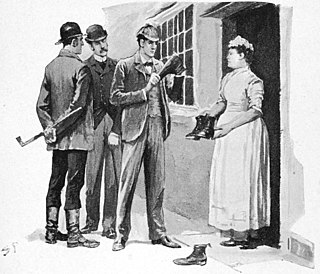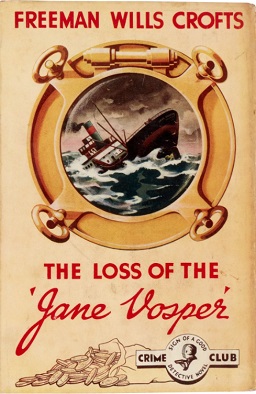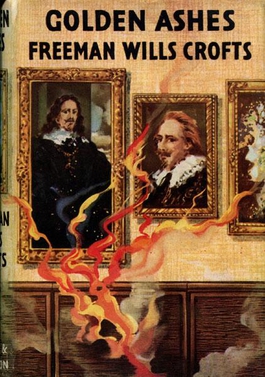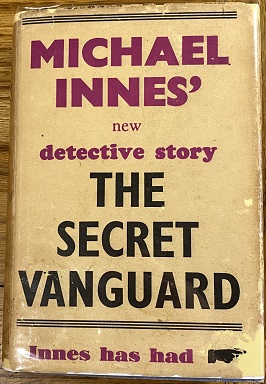
Detective fiction is a subgenre of crime fiction and mystery fiction in which an investigator or a detective—whether professional, amateur or retired—investigates a crime, often murder. The detective genre began around the same time as speculative fiction and other genre fiction in the mid-nineteenth century and has remained extremely popular, particularly in novels. Some of the most famous heroes of detective fiction include C. Auguste Dupin, Sherlock Holmes, Kogoro Akechi, and Hercule Poirot. Juvenile stories featuring The Hardy Boys, Nancy Drew, and The Boxcar Children have also remained in print for several decades.

Crime fiction, detective story, murder mystery, mystery novel, and police novel are terms used to describe narratives that centre on criminal acts and especially on the investigation, either by an amateur or a professional detective, of a crime, often a murder. Most crime drama focuses on criminal investigation and does not feature the courtroom. Suspense and mystery are key elements that are nearly ubiquitous to the genre.

Ronald Arbuthnott Knox was an English Catholic priest, theologian, author, and radio broadcaster. Educated at Eton and Balliol College, Oxford, where he earned a high reputation as a classicist, Knox was ordained as a priest of the Church of England in 1912. He was a fellow and chaplain of Trinity College, Oxford until he resigned from those positions following his conversion to Catholicism in 1917. Knox became a Catholic priest in 1918, continuing in that capacity his scholarly and literary work.

The Notting Hill Mystery (1862–1863) is an English-language detective novel written under the pseudonym Charles Felix, with illustrations by George du Maurier. The author's identity was never revealed, but several critics have suggested posthumously Charles Warren Adams (1833–1903), a lawyer known to have written other novels under pseudonyms. It is seen as one of the first detective novels in the English language, if not the first.
An insurance investigator examines insurance claims that are suspicious or otherwise in doubt. Investigators in this field have differing specialties and backgrounds. Some insurance companies have their own in-house investigation teams while other companies sub-contract the work to private investigators or private investigation firms. Although such investigations are usually conducted to combat fraud, very often investigators will be working simply to establish the circumstances of a particular claim.

The Golden Age of Detective Fiction was an era of classic murder mystery novels of similar patterns and styles, predominantly in the 1920s and 1930s. The Golden Age proper is in practice usually taken to refer to a type of fiction which was predominant in the 1920s and 1930s but had been written since at least 1911 and is still being written.

Kendell Foster Crossen was an American pulp fiction and science fiction writer. He was the creator and writer of stories about the Green Lama and the Milo March detective and spy novels.

The Man Who Grew Tomatoes is a 1959 mystery detective novel by the British writer Gladys Mitchell. It is the thirty second in the long-running series of books featuring Mitchell's best known creation, the psychoanalyst and amateur detective Mrs Bradley.

Sorry You've Been Troubled is a 1942 thriller novel by the British writer Peter Cheyney. It was the fifth book in his series featuring the hardboiled London-based private detective Slim Callaghan. It was published in the United States under the alternative title of Farewell to the Admiral.

The Mystery of the Open Window is a 1929 mystery detective novel by Anthony Gilbert, the pen name of British writer Lucy Beatrice Malleson. It is the fourth novel in a series featuring her amateur detective, the politician Scott Egerton. Unlike the rest of the series it was published by Gollancz rather than Collins. It takes the form of a locked room mystery, a popular branch of the genre during the Golden Age of Detective Fiction.

The Loss of the Jane Vosper is a 1936 detective novel by Freeman Wills Crofts. It is the fourteenth in his series of novels featuring Inspector French, a Scotland Yard detective of the Golden Age known for his thorough technique. It particularly dwells on the process of police procedure.

Golden Ashes is a 1940 detective novel by the Irish writer Freeman Wills Crofts. It is the twentieth in his series of novels featuring Inspector French, a prominent investigator of the Golden Age of Detective Fiction.

Proceed with Caution is a 1937 detective novel by John Rhode, the pen name of the British writer Cecil Street. It is the twenty-seventh in his long-running series of novels featuring Lancelot Priestley, a Golden Age armchair detective. It was published in the United States the same year by Dodd Mead under the alternative title Body Unidentified.

The Secret Vanguard is a 1940 thriller novel by the British writer Michael Innes. It is the fifth in his series featuring John Appleby, a young Detective Inspector in the Metropolitan Police. The novel takes place in the early stages of the Second World War, and functions closer to a mystery spy novel than the traditional detective novel.

The Footsteps at the Lock is a 1928 detective novel by the British author Ronald Knox. Written during the Golden Age of Detective Fiction it is one of five books featuring his insurance investigator Miles Bredon. The author was very familiar with the area of western Oxfordshire, where much of the novel takes place.

Still Dead is a 1934 mystery detective novel by the British author Ronald Knox. It is the fourth in a series of five novels featuring the insurance investigator Miles Bredon, one of the many detectives of the Golden Age of Detective Fiction. It was published in London by Hodder and Stoughton and in New York by Dutton.

The Body in the Silo is a 1933 detective novel by the British author Ronald Knox. It is the third in a series of five novels featuring the insurance investigator Miles Bredon, one of the many detectives of the Golden Age of Detective Fiction. It is a country house mystery taking place in Herefordshire close to the Welsh border. It was published in the United States by Dutton under the alternative title Settled Out of Court.

The Three Taps is a 1927 detective novel by the British author Ronald Knox. Written during the Golden Age of Detective Fiction, it is the first in a series of five novels featuring the insurance investigator Miles Bredon. It is has been suggested that Knox's portrayal of Miles Bredon and his wife Angela as a crime-solving couple may have influenced Nick and Nora Charles's creation of The Thin Man. It was published in London by Methuen and in New York by Simon and Schuster. In 1930 the author was one of the founders of the Detection Club.

The Viaduct Murder is a 1925 mystery detective novel by the British author Ronald Knox. A stand-alone novel, it was a precursor to his series of five books featured the insurance investigator Miles Bredon, all published during the Golden Age of Detective Fiction. It was published in London by Methuen and in New York by Simon and Schuster.

Suicide Excepted is a 1939 detective novel by the British writer Cyril Hare. It was his third novel to feature Inspector Mallett of Scotland Yard, one of the numerous investigators of the Golden Age of Detective Fiction. Mallet takes a back seat for the middle of the novel and much of the detective work is done by three amateur detectives.



















